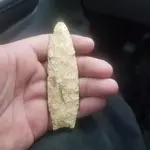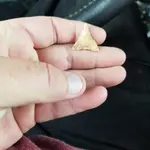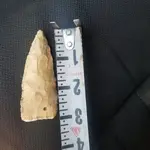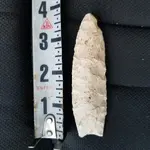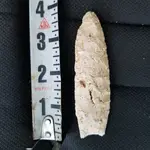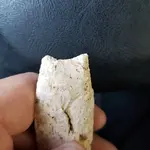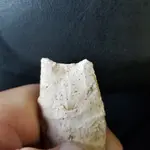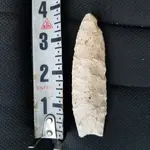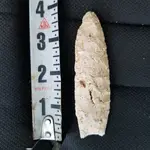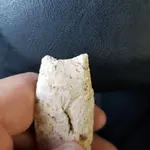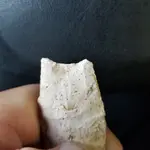All of this stuff is very regional to a degree, and my personal experience is mostly with plains, mountain, and great basin stuff from out West. One also has to take into account the qualities of the tool stones available and utilized. If I encountered that first biface you posted I would call it an unfluted Clovis. There has always been a war of sorts between lumpers and splitters in projectile point naming and typology, and the archaeologists were some of the worst offenders. Sometimes I see the myriad names given to otherwise ubiquitous projectile point types and it makes my head spin.
Your first point there has the right concave base, and most importantly those biface thinning flakes which extend from the edge past the medial ridge. That is very telling. While purists might argue that fluting is the defining characteristic of a true Clovis point, I do not see yours as technologically or culturally distant enough to differentiate between the two. There are unfluted Clovis points, and unfluted Folsom points, especially when rough tool stone or expediency required it.
When I look at that biface, it screams Clovis at me. Considering the lumps and stacks on the piece, I don;t think that material would lend itself well to fluting, and the knapper certainly knew that. The only way to know for sure is to see some of the associated artifacts and debitage, and to see if any of that demonstrates Clovis technology. That may or may not be possible depending on where you found it. If you found it in a waterway then we will not have that option available. You could also contact the people at Topper and get their opinion. Lots of areas/institutions are conducting a census of fluted point discoveries. I can't vouch for the researchers at Topper so take that with a grain of salt. Some archaeologists are cool, many are real aholes.
Congrats on what is probably an outstanding find.



